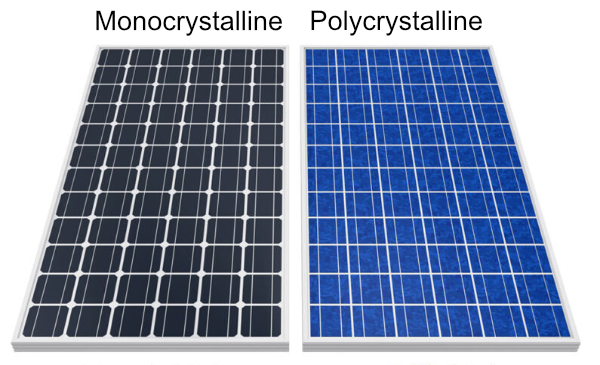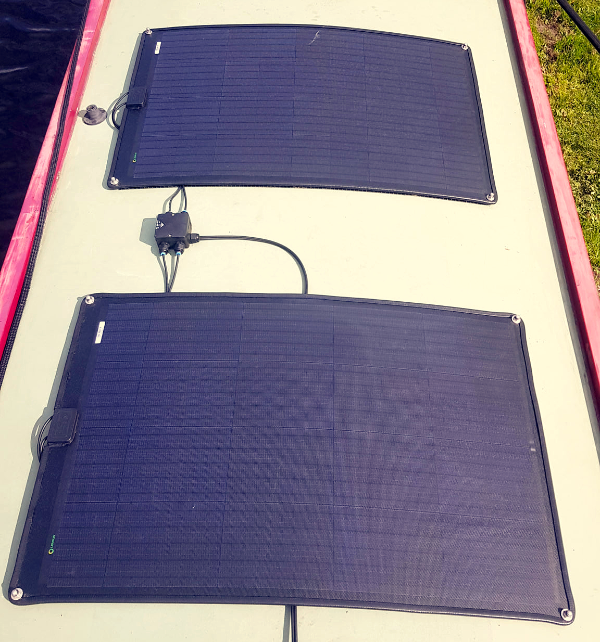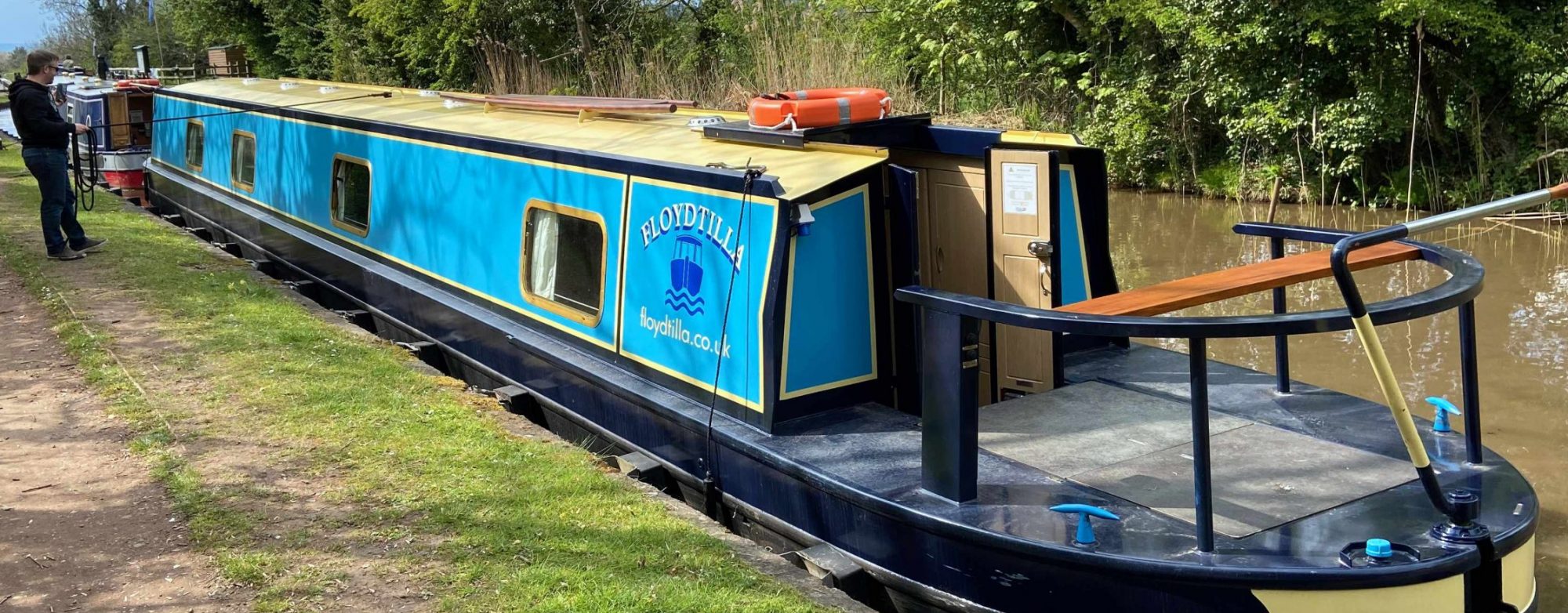Solar panel technology is a fast moving area, but as of today in 2023 there are two types of solid panels as well as flexible panels that are available for boats.
Solid Monocrystalline & Polycrystalline Panels
Monocrystalline are the current premium panels, they are made from silicon that is formed into bars and then cut into wafers. Monocrystalline can be identified as the surface looks dark and uniform, these are the most efficient of the main panel types.
Monocrystalline are around 20% efficient, in that they can convert about 20% of the energy that falls on them into power.

Polycrystalline are cheaper and less efficient, they are made by melting fragments of silicon to form wafers, they can be identified due to there blue speckled look.
Polycrystalline are around 14-16% efficient, in that they can convert about 15% of the energy that falls on them into power.
These silicon solar cells are placed between protective layers and bonded together in a similar way to the laminator you use in the office but on a much greater scale and higher heat, the quality of the encapsulation and material used in vital to the life of the panels. To finish the panels a frame is added and this is also carefully bonded to the now laminated panel with the wiring often via a flying lead with an MC4 connector already attached.
There are many other solar technologies that are yet to make it to the marine market either due to lower current efficiency or higher costs.
Flexible & Semi-Flexible Solar Panels
These are getting more common on boats and as it is a popular option on narrow and wide beam canal boats to have a curved roof. Made with a printed photovoltaic material or a fine Monocrystalline solar cells. Flexible panels are both lighter and robust once fitted and can be walked on, they do however have a shorter lifespan and are less efficient that they’re solid counterparts at between 10-15%. The cost in greater per Kw and also need to be glued to the roof, which can be a problem of you damage one or need to repaint, it also makes them impossible to tilt for optimal performance in poor light conditions.

Flexible panels would be a good option for us if our boat was newer with a more stable roof paint layer as we could cover much more of the roof with them without loosing any visability or access to the roof.
Our selection at the moment is still the Monocrystalline 415W Perlight Delta panels on the tilting mountings at the moment, but we will have a bit to investigate.
Also see
Planning for Solar Panels – Part 1
Planning for Solar Panels Part 2 – Panel Mounting Options
Planning for Solar Panels Part 3 – Types of Panels
Planning for Solar Panels Part 4 – MPPT vs PWM solar controllers
Planning for Solar Panels part 5 – Cable sizes, lengths and resistance.
Planning for Solar Panels part 6 – Panels in Serial or Parallel
Planning for Solar Panels part 7 – Buying the cable and Circuit breakers
Planning for Solar Panels part 8 – Buying Solar Panels and Mountings
Planning for Solar Panels part 9 – Wiring
Planning for Solar Panels part 10 – Drilling, Tapping and Fitting


8 Replies to “Planning for Solar Panels Part 3 – Types of Panels”
Comments are closed.